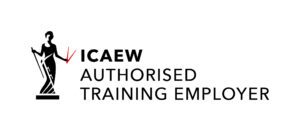Work from home tax relief claim for sole trader / self employed
Like this page? Share it with your friends
Facebook
Twitter
LinkedIn
WhatsApp
Email
Print
Table of Contents
Can sole trader claim tax relief for working from home?
Sole traders can claim tax relief on a percentage of their household expenditures incurred as a result of working from home. These can include the following:
- Electricity bill
- Gas bill
- Council tax
- Metered water bill (only where this is for business use such as if you run a catering service)
- Home insurance, unless your business has separate insurance
- Mortgage interest, but you cannot claim any part of the repayments towards capital
- Rent
- Household repairs and maintenance where it affects your business use (you cannot claim for things such as a new bathroom suite, but you may be able to claim repainting your office room which you use to meet with clients)
- Business calls on a landline
- Broadband
What are the rules for sole trader to claim tax relief for working from home?
You must make your claim through your annual self-assessment tax return. When it comes to figuring out how much you may claim, you have two alternatives.
What is the flat rate method for sole trader to claim tax relief for working from home?
The easiest and most straightforward method is to claim a flat rate based on the amount of hours you work from home per month. HMRC has established the following flat rate allowances:
- 25 – 50 hours: £10 per month
- 51 – 100 hours: £18 per month
- 101+ hours: £26 per month
The flat rate allowance may not appear too generous; however, it is still a maximum saving of £312 per year.
What is the cost method for sole trader to claim tax relief for working from home?
Sole trader can choose to claim a more precise proportion of household bills if this would enable you to receive a larger tax saving. To do this, you must provide reasonable estimates and show your calculations. HMRC do not have fixed rules as to how you should make these calculations as they recognise that each individual’s circumstance will be different. For example, those who live and work in a house with multiple bedrooms will calculate their expenses very differently to someone who lives and works in a studio apartment.
As a general rule for calculations, you should consider two variables:
- How much of your time do you work at home?
- How much of your home do you use for business?
Being self-employed generally entails the ability to choose where you work. For many sole traders, this means working from home during the day. However, it is important to note that HMRC will consider the type of work you do to ensure it makes sense when it comes to how much you claim for in working from home expenses. For example, if you are a maths tutor, you may spend time working in your own home as well as at students’ homes. However, if you work as a builder, then it becomes much more unlikely that you’ll spend significant amounts of time working at your own home. Be aware of this and be realistic when it comes to allotting how much time is spent working from home.
HMRC will also want to know how much of your house is utilised for business. It’s unlikely that you’ll be allowed to claim working from your bathroom or children’s bedroom, for example. However, it may be realistic that you work 80% of the time in a study and 20% of the time in your kitchen. If you live in an open plan space or studio, then you may want to consider a percentage of the overall floorspace. In general, it is recommended that you do not use one room or part of the house exclusively for business only as this can attract capital gains tax when it comes to selling your property later.
You can then base your calculations on the facts once you’ve examined these two criteria. You can calculate this by multiplying the cost of your eligible household bills by the number of rooms in the residence. Then figure out which rooms you actually utilise for work and assign a percentage of that time to those spaces.
To illustrate, we can use an example where there are 5 rooms in total in your house and you use the study and the kitchen. Where your electricity bill for the whole house comes to £80 for a month, you would divide this by 5 (the number of rooms in your house). You may then estimate that you spend 30% of your time using the study for work and 10% in the kitchen. You could then calculate 30% of £16 (the average cost to run electricity in each room of your house) for the study and 10% of £16 for the kitchen as a fair portion of the electricity bill used for business purposes. You would claim £6.40 in total. This method can be repeated for each of the household bills.
HMRC have provided more examples of different ways you can calculate a reasonable portion of costs due to working from home. The examples are not exhaustive and have only been intended to demonstrate different principles applied. If you need advice or help on how to claim tax relief in this way, please feel free to contact us.

Our service to you
If you are a self employed, business owner/director of company looking to get your accountancy and taxation matters sorted, look no further. We, at Naail & Co, are pro-active and easily accessible accountants and tax advisors, who will not only ensure that all your filing obligations are up to date with Companies House and HMRC, but also you do not pay a penny more in taxes than you have to. We work on a fixed fee basis and provide same day response to all your phone and email enquiries. We will also allocate a designated accounts manager who would have better understanding of your and business financial and taxation affairs. Book a free consultation call using the link below.
Related pages:
Get further information from the following pages;
Related Blogs:
Get further information from the following blogs;
Work from home claim for company directors
Subscribe to our newsletter
BUSINESS HOURS
Monday – Friday
- 9:00 am – 5:30 pm
Pages:
Menu








